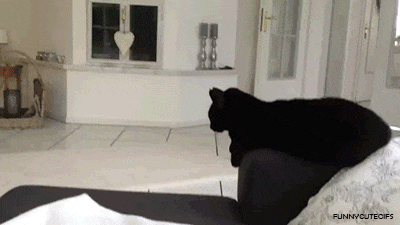And
cat people know that when it comes to stroking, each cat seems to have
very specific preferences — and not doing it right can have some harsh consequences.
Koshka Schweig-PalombaSarah V. Schweig
For
instance, in my own household, Brioche prefers the facial area, while
Koshka prefers the tail base ... depending on the time of day and who is
petting her.
GiphyHuman beings, the most curious animal, decided to investigate where cats generally prefer being pet most.
Image modified from: www.pet-happy.com
Sarah Ellis, a feline behavior specialist at International Cat Care, and her colleagues at the University of Lincoln in the U.K.
were determined to get to the bottom of where cats like being pet most
and why. So they teamed up to delve into studies to help cat owners
understand.
Giphy
After
experimenting with the petting of different areas on a cat in different
orders and coming from different people, the results were quite
interesting — and Katzenworld sums up the rather complicated findings very well.
Image modified from: www.pet-happy.com
Oddly enough, despite Koshka's preference, most negative reactions occurred when cats were stroked at the base of their tails.
And it also found that Brioche is definitely not alone in her enthusiasm for face-pets.
Two cats with two very different petting-style preferences.Sarah V. Schweig
The
study also found that being stroked by the humans whom cats live with
led to more negative responses than being stroked by an unfamiliar
person ... Perhaps familiarity breeds contempt? Perhaps cats know just
how to charm strangers?
GiphyThe
order of areas being stroked (head-to-base-of-tail versus
base-of-tail-to-head) appeared to have no influence over whether a cat
liked or didn't like the petting session.
Sarah V. Schweig
So, there's some order to the chaos, apparently — but not too much. And that's probably one of the reasons we love them.
GiphyRead more about cats and their mysterious and amazing qualities here.
Update: This article has been updated to show that the research was conducted by Sarah Ellis at the University of Lincoln.
sourcw









No comments:
Post a Comment